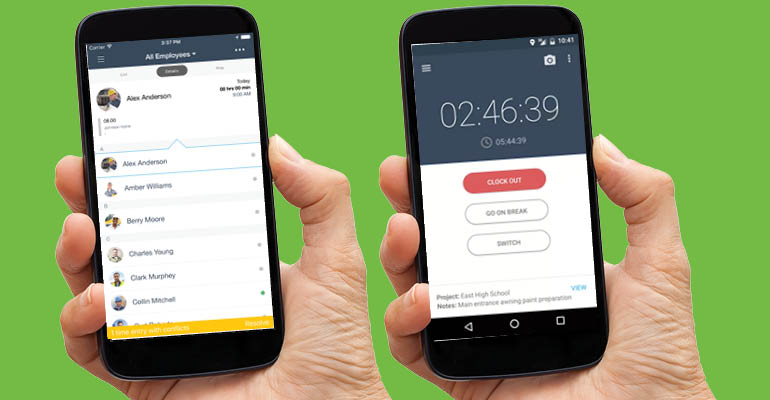A Look at a Tool that Can Help Waste & Recycling Companies Track Equipment
Created by a contractor, the app helps waste and recycling businesses track their teams and equipment from any mobile device or laptop.

Mobile technology continues to impact the waste and recycling industry by streamlining processes and making business operations more automated. Routing and safety are two of the more prominent uses for the new technology, but one company has found a way to automate labor and cost management through a mobile app.
St. George, Utah-based busybusy created a digital timesheet app for iPhone and Android that automates time and GPS labor tracking, job costing and documentation. It also provides real-time information that helps companies become more efficient.
Created by a contractor, the app helps waste and recycling businesses track their teams and equipment from any mobile device or laptop. It also allows them to see their equipment GPS, equipment operators, and get live stats on equipment fuel consumption and service reports.
Waste360 recently sat down with Herbert Timpson who handles marketing for busybusy, to discuss the company’s apps, their use in the waste and recycling industry and how mobile devices are becoming advanced management tools to monitor employees’ time, document project progress and review budgets.
Waste360: What services or products do you offer the waste and recycling industry?
Herbert Timpson: Waste service professionals use busybusy to track their operators and which machines they're using. This allows management to identify productivity of drivers and profitability of routes. In addition to this, yard staff can clock in to activities and projects, logging time against certain cost codes. This is effective because it provides management with a bird's eye view of their workforce, and a clear picture of each day's labor activities.
Waste360: How do the time clock and equipment time tracking apps work?
Herbert Timpson: The time clock works as an app on each employee's phone. When clocking in, the employee selects the project and activity (cost code) for that day's work. All of this time is logged against the project, and tracked real-time in the cloud, so the office can be in the know.
Equipment tracking occurs when the employee clocks in. Similar to when the project and activity is selected, the equipment being used can also be chosen. The result is that equipment hours are logged, with the time associated with a jobsite/project and activity.
Waste360: What benefits can waste and recycling businesses experience from these two apps?
Herbert Timpson: The benefit of these two apps is the ease of collecting labor and equipment hours. Business owners and supervisors/dispatchers are able to identify both the labor and equipment costs each day. This improves a business owner's ability to forecast and predict future growth. This also helps business owner's to identify potential productivity improvements in the day to day activities of their workforce.
Waste360: What challenges have you faced in implementing the mobile apps?
Herbert Timpson: The primary challenge is helping business owners to understand how most effectively to use the service. A secondary challenge is helping employees to understand the value of the service to them—their time is accurately tracked which greatly reduces payroll mistakes.
Waste360: What if the future of the time tracking app technology?
Herbert Timpson: Automation. The time tracking industry is quickly moving toward automating the process of clocking in, using technologies like geofencing and location-based reminders, the hardware and software of the industry is quickly trending toward automation.
Waste360: What other technologies do you offer the waste and recycling industry?
Herbert Timpson: The busybusy system integrates with VisionLink, the equipment analytics technology from CAT. Using this service, relevant information is sent directly from the machine to the busybusy platform, providing even more advanced insights.
About the Author
You May Also Like


.png?width=300&auto=webp&quality=80&disable=upscale)